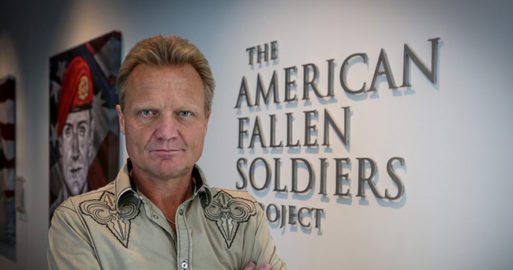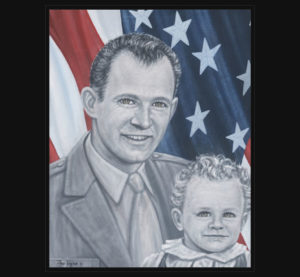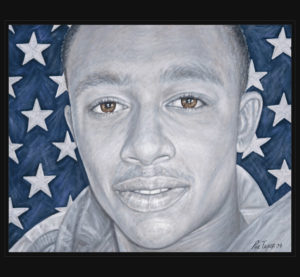In July, 2006, artist Phil Taylor received some devastating information. His best friend, Blake, who was fighting in the war on terror, had been killed. Stunned and not knowing what to say to Blake’s family, Phil attended the memorial service. Blake’s father wept openly. Phil wanted to find some way he could offer some kind of comfort to the family. This was how American Fallen Soldiers was born.

Credit: americanfallensoldiers.com
After giving the matter great consideration, Phil decided to paint a portrait of Blake in his military gear. Working slowly and carefully, he completed the piece and brought it to Blake’s family. Blake’s father thanked him over and over, and said he felt that Phil had restored his son to him.
Phil began to think of other soldiers who had fallen in Iraq or Afghanistan. Meanwhile, other people heard about his skill and dedication and asked him to paint their dead loved ones as well. Phil found that each new American Fallen Soldiers painting took between 70 and 100 hours to complete.

Credit: americanfallensoldiers.com
After he finishes each American Fallen Soldiers painting, Phil puts it in a black, glossy box. American Airlines has agreed to provide the transportation. They deliver the painting to a public place such as a church or an auditorium, where it is placed on an easel. At the end of a brief ceremony in which the dead soldier’s family and friends get to see the painting, the next of kin take it home and put it in their house.
At first, Phil found it hard to get through those ceremonies without weeping. Each American Fallen Soldiers painting reminded him of Blake. He also found it difficult to stay in control as the families cried and shared stories of their loved one.

Credit: americanfallensoldiers.com
Between 2006 and 2009, Phil painted 50 pictures of soldiers killed in Afghanistan and Iraq. During that time, 5,054 died in battle. Phil has a waiting list of over 200. He has considered bringing in other artists to help out with American Fallen Soldiers, but he says he works best by himself. And his unique style doesn’t meld well with those of other artists. He doesn’t want to provide anything but his best – not somebody else’s best.
Some people assume that Phil is pro-war because he works so hard to help the families of deceased soldiers. Others assume that Phil must be anti-war because he sees the terrible havoc it wreaks. Phil’s outlook is entirely different. He doesn’t consider himself pro-war or anti-war but rather pro-service. Instead of taking sides about the war, he prefers to think he is paying tribute to people who gave their all to serve their country.

 American Fallen Soldiers Helps Brings Loved Ones Home Again
American Fallen Soldiers Helps Brings Loved Ones Home Again


 John Mulaney’s “Funeral Planning” on Netflix: No Real Plan
John Mulaney’s “Funeral Planning” on Netflix: No Real Plan

 Composting Bodies Is Now Legal in a Dozen States
Composting Bodies Is Now Legal in a Dozen States














